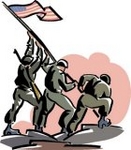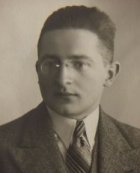
Worksheets and No Prep Teaching Resources
Reading Comprehension Worksheets
World War II

World War II
 Worksheets and No Prep Teaching Resources Reading Comprehension Worksheets World War II |
 World War II |
| edHelper's suggested reading level: | grades 6 to 8 | |
| Flesch-Kincaid grade level: | 5.79 |
|
The Secret of the Code Breakers, Part 1
By Toni Lee Robinson |

|
 1 Spies, codes, secret back rooms - it all sounds like a thriller movie plot. In wartime, however, secrets can be very important. Top secret plans must be relayed to troops in the field. Ships, planes, and the like must all be quietly sent where they are needed. In World War II, contact was often made by radio. Telegraph and hand delivery were also used.
1 Spies, codes, secret back rooms - it all sounds like a thriller movie plot. In wartime, however, secrets can be very important. Top secret plans must be relayed to troops in the field. Ships, planes, and the like must all be quietly sent where they are needed. In World War II, contact was often made by radio. Telegraph and hand delivery were also used. |
Create Weekly Reading Books
Prepare for an entire week at once! |
| Leave your feedback on The Secret of the Code Breakers, Part 1 (use this link if you found an error in the story) |
 |
World War II
|
 |
Social Studies
|
 |
United States
|
|
|
|
|
 | Fifty States Theme Unit |
 |
Document Based Activities |